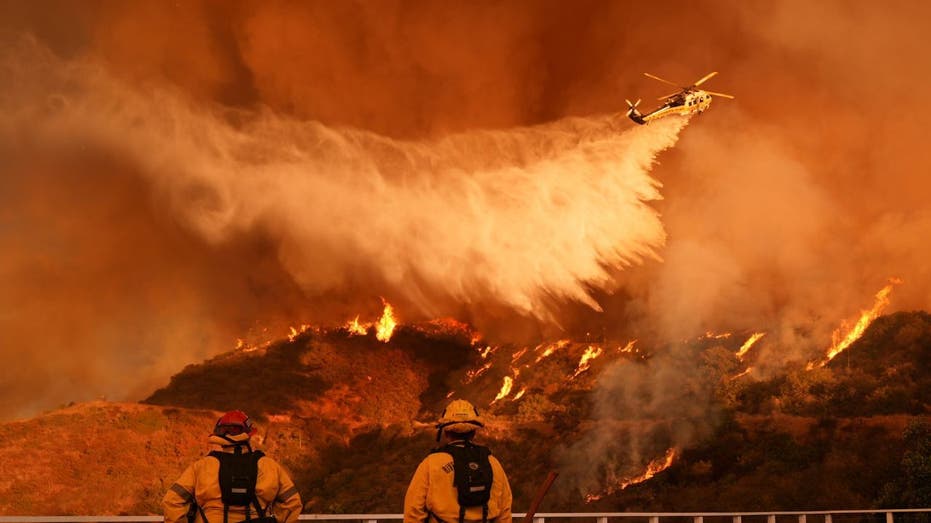Oakland’s $129.8 million budget deficit could eradicate up to 30% of its firefighting capacity, depleting a strapped department already stretched thin by station closures, according to sources on the ground.
Fire response times in the Democrat-controlled California city are already three times the national average after budget cuts that recently closed two fire stations and kept a newly renovated station from reopening.
City Councilmember Zac Unger, who was an Oakland firefighter for 27 years, told Fox Digital that four more stations could face closures because of deficits.
“We have three firehouses currently closed and another four slated to close … which would represent about 30% of our firefighting capacity here in Oakland, an absolutely catastrophic potential for the city of Oakland,” Unger said. “We simply cannot afford to lose 30% of our fire and emergency medical response.”
Firefighters and city officials have been working overtime in “an all-hands-on-deck moment,” Unger said, to identify available funds in the city’s budget and keep Oakland’s firehouses open. Fire Chief Damon Covington told Fox Digital inroads have been made to prevent the additional four fire stations from closing, but that’s not to say closures won’t come down the road.
“Seven firehouses would represent about 30% of our fire department,” Covington said. “It’s a tremendous threat because, ultimately, we need more fire service to cover our city adequately, and to lose two firehouses and a third that was under renovation, it taxes our workforce.”
The fire department’s limited capacity has slowed response time, creating the potential for a disaster like the Palisades and Eaton wildfires, President of Oakland Firefighters Local 55 Seth Olyer said.
“We had a house fire in the end of east Oakland in Engine 28’s area,” he said. “Normally, that engine would have been able to get to the fire within four minutes. The closest fire engine took nearly 11 minutes to get there. With a fire doubling in size every minute, you can do the math. This went from a small fire inside the house to a total loss and nearly threatening the surrounding area and potentially starting a wildland fire, much like in L.A.”
“Our firefighters do incredible work, and they will make do with whatever difficult circumstances you give them, but yes, we have seen slowed response times,” Unger told Fox Digital. “There’s simply no way to close firehouses and expect to receive the same level of service.”
The interim mayor’s office did not respond to a request for comment. But in its current budget proposal, the city cites one-time COVID-19 pandemic costs and retirement benefits, including OPEB liability and CalPERs benefits costs, as the “fiscal challenges leading to [a] projected deficit” of $129.8 million. Oakland’s 2024-2025 fiscal budget proposed fire station “brownouts” for six months beginning January 2025 to save the city $5.5 million.
But local firefighters say brownouts could come at a much higher cost.
“When you close firehouses, it creates a domino effect,” Covington said in an interview with Fox Digital. “It’s not just the firehouse that you’re closing, it’s the surrounding jurisdictions, the other firehouses that are close to that firehouse that have to cover the ground of that station.”
Oakland firefighters say they face the same cuts that the Los Angeles Fire Department warned about ahead of the devastating Palisades and Eaton wildfires in January. Oakland is no stranger to fire devastation itself. The Oakland firestorm of 1991 killed 25 people, injured 150 and destroyed more than 3,000 homes. Olyer said the 1991 fire fundamentally changed fire department response tactics and how fire crews cooperate with surrounding agencies.
“That fire was so massive it took a herculean effort by the Bay Area and basically fire departments from all over the western U.S. to control,” Olyer told Fox Digital. “You’re seeing the same thing with Los Angeles. It’s not realistic to think that any fire department would be able to stop any sort of huge fast-moving wildfire with hurricane force winds in conditions like that.”
KELSEY GRAMMER SAYS CALIFORNIA LAWMAKERS ‘TOOK THEIR EYE OFF THE BALL’ IN WILDFIRES CATASTROPHE
A quick, efficient and collaborative firefighting operation is possible with ample resources. In October, Olyer described how proper staffing and cooperation with CAL FIRE prevented the Keller Fire from becoming another California catastrophe.
“The Keller fire, which happened last October, was a perfect example of what a properly staffed fire department and early intensive action can do to really stop a fire before it gets out of control,” Olyer said. The event, he said, showed what “cooperation among agencies looks like, with CAL FIRE doing water drops on top, helicopter drops on it and massive amounts of resources very early on.”
“The department has been running bare bones in Oakland for decades,” Olyer said. “We have fire engines driving around with nearly 300,000 miles, and they’re literally falling apart. It’s just a matter of time until Oaklanders’ luck runs out.”
“We’re all pushing in the same direction. Everybody wants those firehouses open. It really does come down to dollars and cents,” Covington said.
























